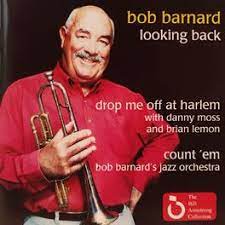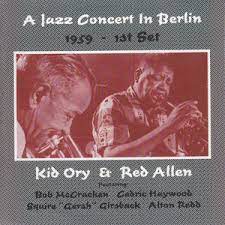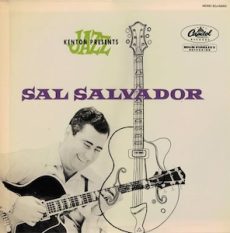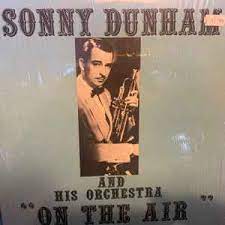
Daily Dose Of Jazz…
Robert Graeme Barnard was born on November 24, 1933 in Melbourne, Australia and his parents had formed a dance band in the 1920s, his mother was the bandleader and pianist, his father on saxophone, drums and banjo. His older brother Len joined them on drums at age 11. He took trumpet lessons from age 11 and played clarinet in a local brass band before he joined the family band at 14 in 1947.
When his brother Len formed his own group, Len’s South City Stompers the next year he joined on trumpet and they made their first recording in 1949 on his 16th birthday. The following year they began a weekly radio broadcast as Len Barnard’s Dixieland Jazz Band. He played with the group until 1955 after being cheated of their takings and stranded in Tumut, Australia. Relocating to Sydney he performed with Ray Price Trio before returning to Melbourne.
In 1958 Barnard joined the Graeme Bell band for an Australian tour. He worked for Brashs from 1958 to 1962, while performing after business hours. He went back to Sydney in 1962 and as a member of Graeme Bell and His All-Stars appeared on Trad Pad, a TV special program.
He was nominated in 1996 at the ARIA Music Awards of 1996 for Best Jazz Album for Live at the Sydney Opera House, which was recorded with the Australian Jazz Allstars.
Trumpeter and cornetist Bob Barnard, who was made a Member of the Order of Australia (AM) for service to music, particularly jazz, transitioned on May 7, 2022.
More Posts: bandleader,cornet,history,instrumental,jazz,music,trumpet

Daily Dose Of Jazz…
Robert Edward McCracken was born on November 23, 1904 in Dallas, Texas. Early in his career he played with local Dallas musicians like Jack Teagarden, Eddie Whitley, the Southern Trumpeters, and Doc Ross’s Jazz Bandits.
From 1926 to 1928 he lived in New York City where McCracken worked with Johnnie Johnston and Willard Robison’s Levee Loungers. After returning to Dallas, he worked with Ligon Smith, Joe Gill, and Ross again. He went on to tour with Joe Venuti and Frankie Trumbauer, before moving to Chicago, Illinois in 1939.
While in Chicago he played with Bud Freeman, and in the Forties he worked with Jimmy McPartland, Wingy Manone, Benny Goodman, Russ Morgan, and Wayne King. He substituted for Barney Bigard in the Louis Armstrong All-Stars international tour in 1952–53. Bob then toured internationally with Kid Ory and Red Allen throughout the 1950s.
During his later years in Los Angeles, California he played in several Dixieland revival groups, working with Ben Pollack, Pete Daily, Wild Bill Davison, and again with Teagarden, Ory, and Allen.
Clarinetist Bob McCracken, who is on many recordings including Kid Ory’s album, This Kid’s the Greatest, transitioned on July 4, 1972.
More Posts: clarinet,history,instrumental,jazz,music

Daily Dose Of Jazz…
Sal Salvador was born Silvio Smiraglia on November 21, 1925 in Monson, Massachusetts and began his professional career in New York City, New York. He eventually moved to Stamford, Connecticut.
In addition to recordings with Stan Kenton and with his own groups, Salvador can be heard in the film Blackboard Jungle, during a scene in a bar where a recording on which he is featured is played on the jukebox. He is also featured playing with Sonny Stitt in the film, Jazz on a Summer’s Day, at the Newport Jazz Festival.
He taught guitar at the University of Bridgeport in Bridgeport, Connecticut as well as at Western Connecticut State University in Danbury, Connecticut. He wrote several instruction books for beginning to advanced guitarists.
Guitarist and educator Sal Salvador transitioned on September 22, 1999 following a fight with cancer at the age of 73.
More Posts: bandleader,guitar,history,instrumental,jazz,music

Daily Dose Of Jazz…
André Persiany was born on November 19, 1927 in Paris, France. His father taught him violin and piano as a child, and by 1945, he had formed his own ensemble. He was a member of the Be Bop Minstrels with Hubert and Raymond Fol in 1947, then played with Michel Attenoux, Eddie Bernard, Bill Coleman, Buck Clayton, Raymond Fonsèque, Lionel Hampton, Guy Lafitte, Mezz Mezzrow, and Tony Proteau.
Relocating to New York City in the mid-1950s, saw him playing at Birdland and working extensively with Jonah Jones. In 1969 he returned to Paris and held a residency as the pianist at Le Furstenberg from 1970 to 1988. His associations in the 1970s included Cat Anderson, Milt Buckner, Eddie Chamblee, Arnett Cobb, Al Grey, Budd Johnson, and Charlie Shavers.
Pianist André Persiany, whose son Stéphane became a double-bassist, transitioned on January 2, 2004 in Paris.
More Posts: bandleader,history,instrumental,jazz,music,piano

Daily Dose Of Jazz…
Elmer “Sonny” Dunham was born November 16, 1911 in Brockton, Massachusetts and attended local schools, taking lessons on the valve trombone at the age of 7. He changed to the slide trombone at the age of 11, and was playing in local bands at 13. He began his musical career as a trombone player in the Boston, Massachusetts area.
By the late 1920s he had moved to New York City where he played with Ben Bernie for six months before moving on in 1929 to Paul Tremaine’s Orchestra. He remained there for two years and while working as an arranger and vocalist with Tremaine’s group he switched to the trumpet.
In 1931 he left Tremaine and for a few months led his own group, calling it Sonny Dunham and his New York Yankees. That same year along with clarinettist Clarence Hutchenrider, trombonist-singer Pee Wee Hunt and singer Kenny Sargent, he was recruited by Glen Gray for Gray’s Casa Loma Orchestra. During the golden years of Casa Loma, he was a popular soloist, scoring a big hit with his trumpet work on Memories of You. He stayed until 1936, when he formed another more unusual group, Sonny Lee and The New Yorkers Band, which featured 14 pieces, with ten of his musicians doubling on trumpet.
Moving to Europe for three months, he then returned to the Casa Loma Orchestra, remaining until 1940 when he tried again to form his own group, this time, with more success. They debuted in 1940 at the Glendale Auditorium in Los Angeles, California and toured and held talent searches throughout the United States. After returning to New York in 1941, they were on nightly radio broadcasts at the Roseland Ballroom, and the Meadowbrook at Cedar Grove, New Jersey.
On the road in California the band played Los Angeles, were featured in the Universal picture Behind the Eight Ball with the Ritz Brothers and he served as musical director for this film, and was part of a vaudeville revue. Over the next couple of decades he would divide his time between New York and Los Angeles with stints in Chicago, Illinois. Dunham briefly experimented with dual female vocalists, Mickie Roy and Dorothy Claire, which did not turn out due to professional temperament.
Dissolving the band in 1951 Sonny joined Tommy Dorsey’s band as trumpet player, then reorganized the next year, remaining active until the decline of the big-band business. By the 1970s obscurity set in, however, he recorded playing trombone on a few LPs with Don Goldie’s Dixieland revival bands.
In the 1980s trumpeter, trombonist and bandleader Sonny Dunham, who was living in a trailer in Miami, Florida and still involved in booking bands for cruises and playing occasionally, transitioned from cancer on July 9, 1990, aged 78.
More Posts: bandleader,history,instrumental,jazz,music,trombone,trumpet


